A Beginner’s Guide to SUP Camping
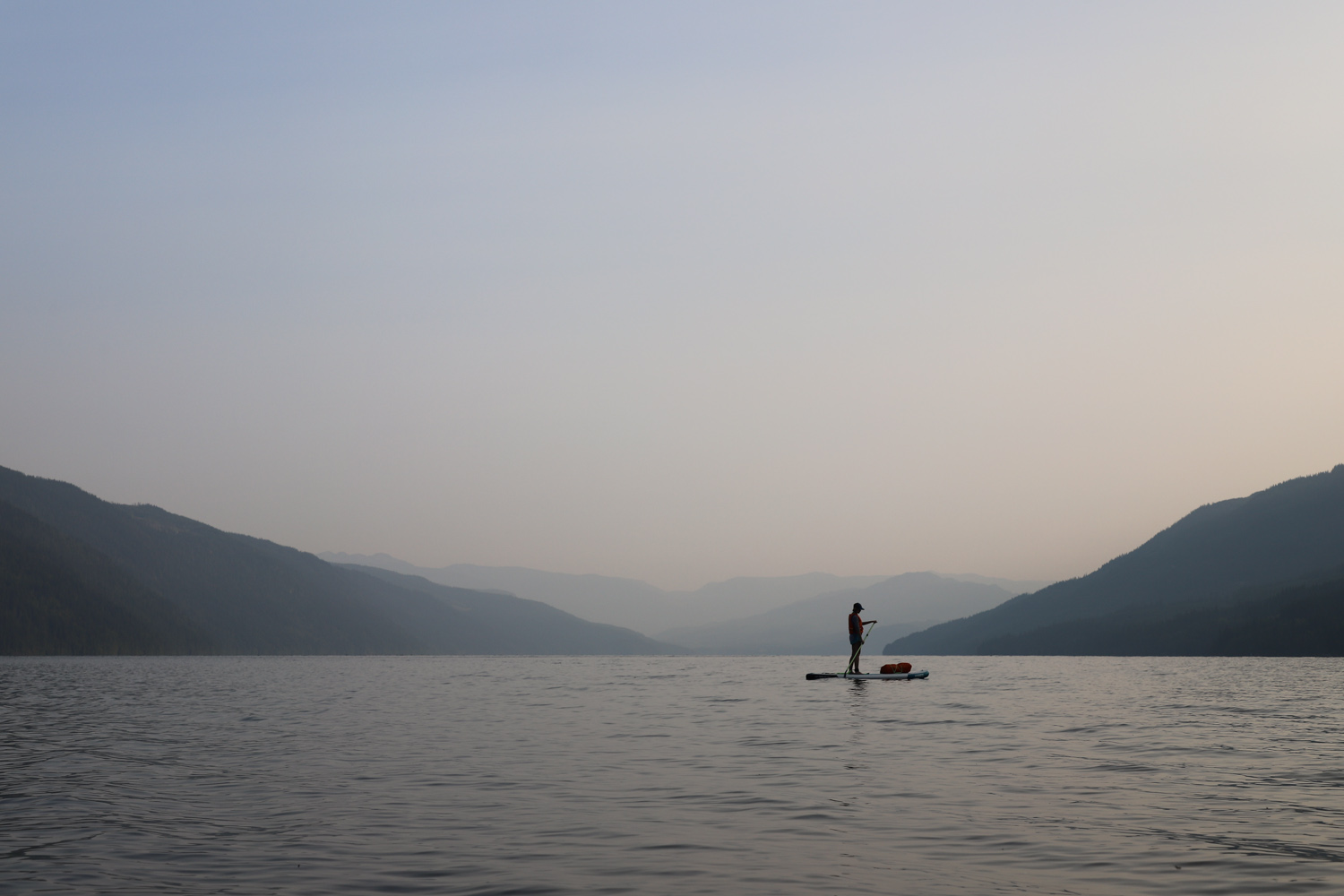
A Beginner’s Guide to SUP Camping
Words and Photos by Hailey Hirst
Prior to a couple weeks ago, I didn’t know SUP camping was a thing. Otherwise known as Expedition SUP, this combination of stand up paddle boarding and backpacking combines two great antidotes for the heat of summer: water and secluded camping.
If you’ve already got the gear for overnight hiking (or normal camping for that matter) you don’t need much more to SUP camp. Just a stand up paddle board (SUP), the necessary accessories (paddle, personal flotation device, etc.), and a dry bag or two.
Notes on how to plan, pack, and paddle:

Disclaimer: I’m not an expert paddle boarder – these suggestions are from an outdoor-lover trying something new.
Planning
Where to go
- SUP is easiest with little wind and calm water. It’s easy to find good conditions on lakes, especially smaller ones.
- When choosing a location, check the weather, water level/conditions, and plan around any other obstacles (in our case, forest fires nearby).
- If you’re going to SUP camp on an ocean coast rather than lake, you’ll need to look into surf conditions and beware of currents and tides as well.
- Choose a route that’s within your paddling ability.
- We’re new at this, so we chose a distance we expected would be less than two hours of paddling.
Where to camp
- Find a good map that shows what kind of public lands you can camp on, or find an established campground as your destination – this all depends on where you are!
- We referenced our backcountry maps and local websites to find out where we could park, put in, and camp.
- If you can’t find good information online, in maps, or camping apps, ask locally at a Visitor Center or a Ranger Station if you’re looking at Forest Service or BLM land.
- Remember to practice Leave No Trace principles when SUP camping!
- We did our best to practice responsible dispersed camping, but with a thick forest surrounding the water we couldn’t find a clear space 200 feet from the water to pitch our tent. Our campsite of least impact was on the fringe of beach, tucked behind a big driftwood snag.
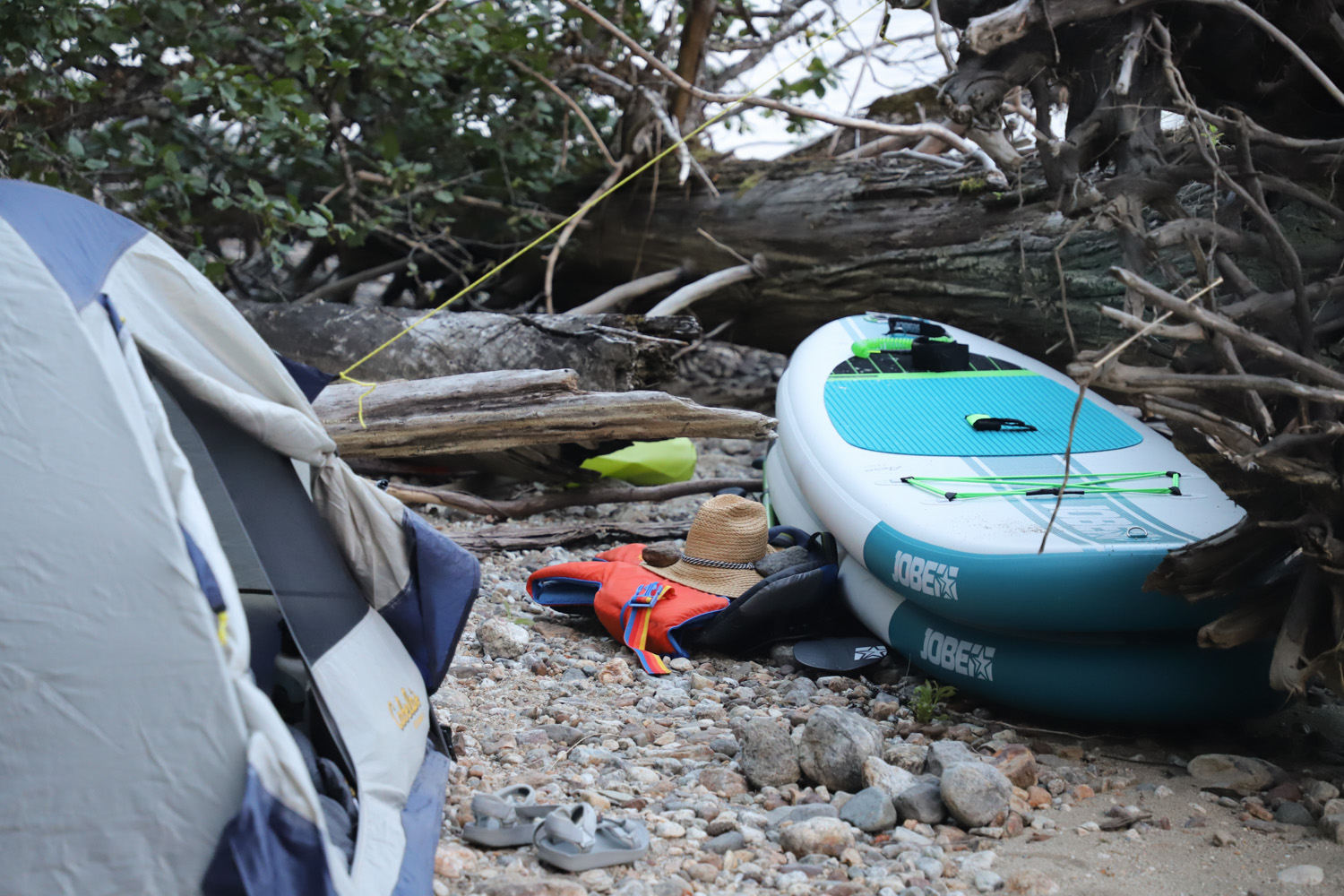
Choose a board
- Wider boards are more stable, especially for beginners. Boards come in two main types:
- Inflatable – They’re light, foldable, easy to store and transport, and surprisingly fast to inflate at the water (just be sure you carry a patch kit and pump with you!).
- Solid – Although bulky, solid boards perform better in the water. They’re faster, smoother, and somewhat easier to maneuver.
- And three different lengths:
- Short – under 10 ft, for kids or surfing
- Medium – 10-12 ft for all around SUP
- Medium is your best bet for most SUP camping, unless you’re doing a long multi-day expedition.
- Long – 12’6 to 14ft for fast paddling and long distance touring
- Rentals – Check out local gear shops for board rentals. Employees there can also help you choose the best board size and type for your specific trip plan and skill level.
- Gear net/straps – Attaching your camping gear is hugely important for SUP camping. Make sure whatever board you choose either has a gear net or straps already attached, or hooks for you to use your own cinch straps.
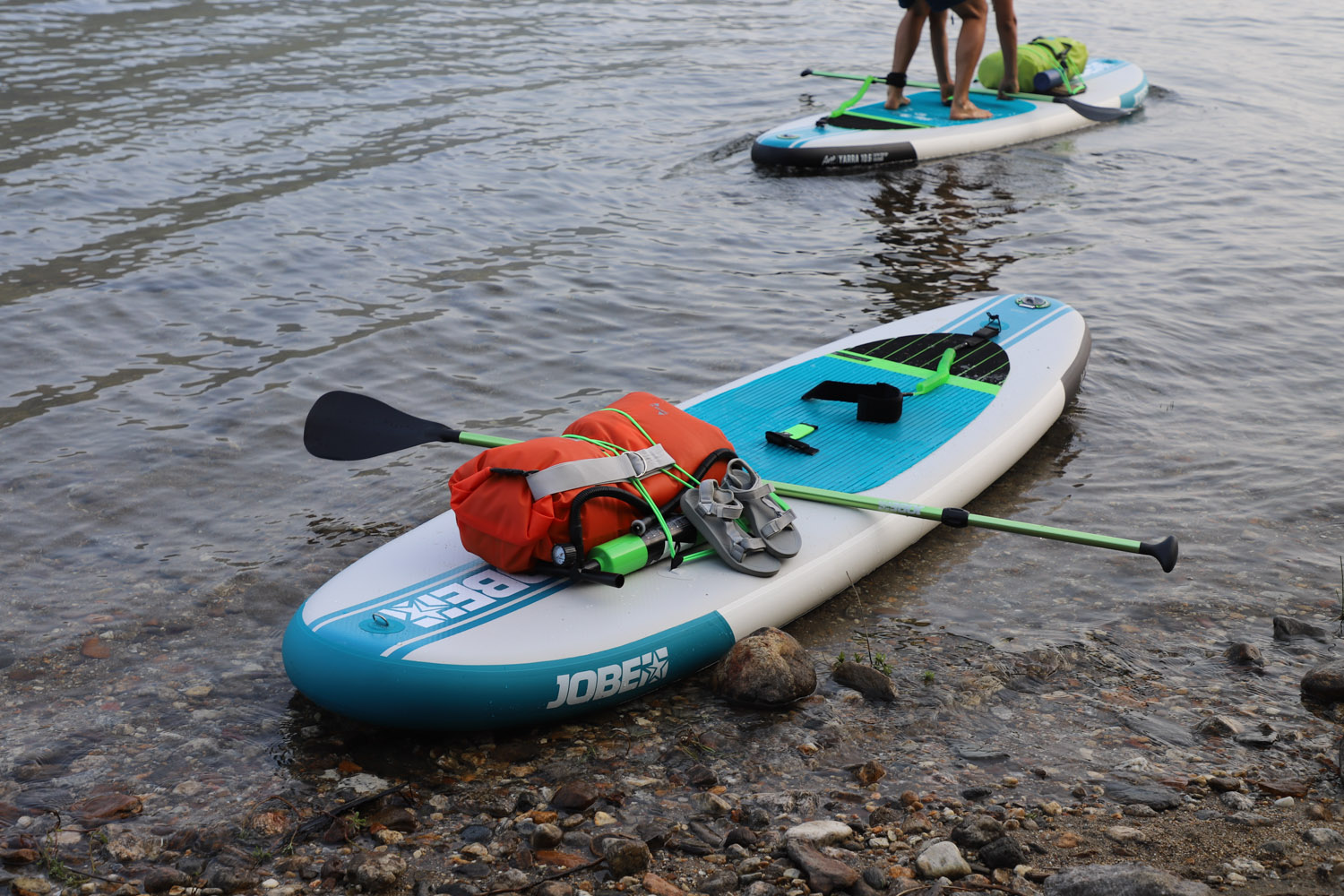
Note: We were lucky to be able to borrow paddle boards for our trip. My in-laws bought these Inflatable boards last summer and they hadn’t seen much use yet. Thanks Sue and Greg!
Practice paddling
- If you’re not super comfortable on a SUP, it’s a good idea to practice a bit before you load up and go. This video has helpful tips.
- The board also feels different with the weight of camping gear. Take some time to practice with your gear strapped on to get a feel for it.
Packing
Bags
- 2 large 65L dry bags to hold the bulk of your gear
- 1 small 4L dry bag for quick-access and emergency supplies
- Straps to secure bags to boards
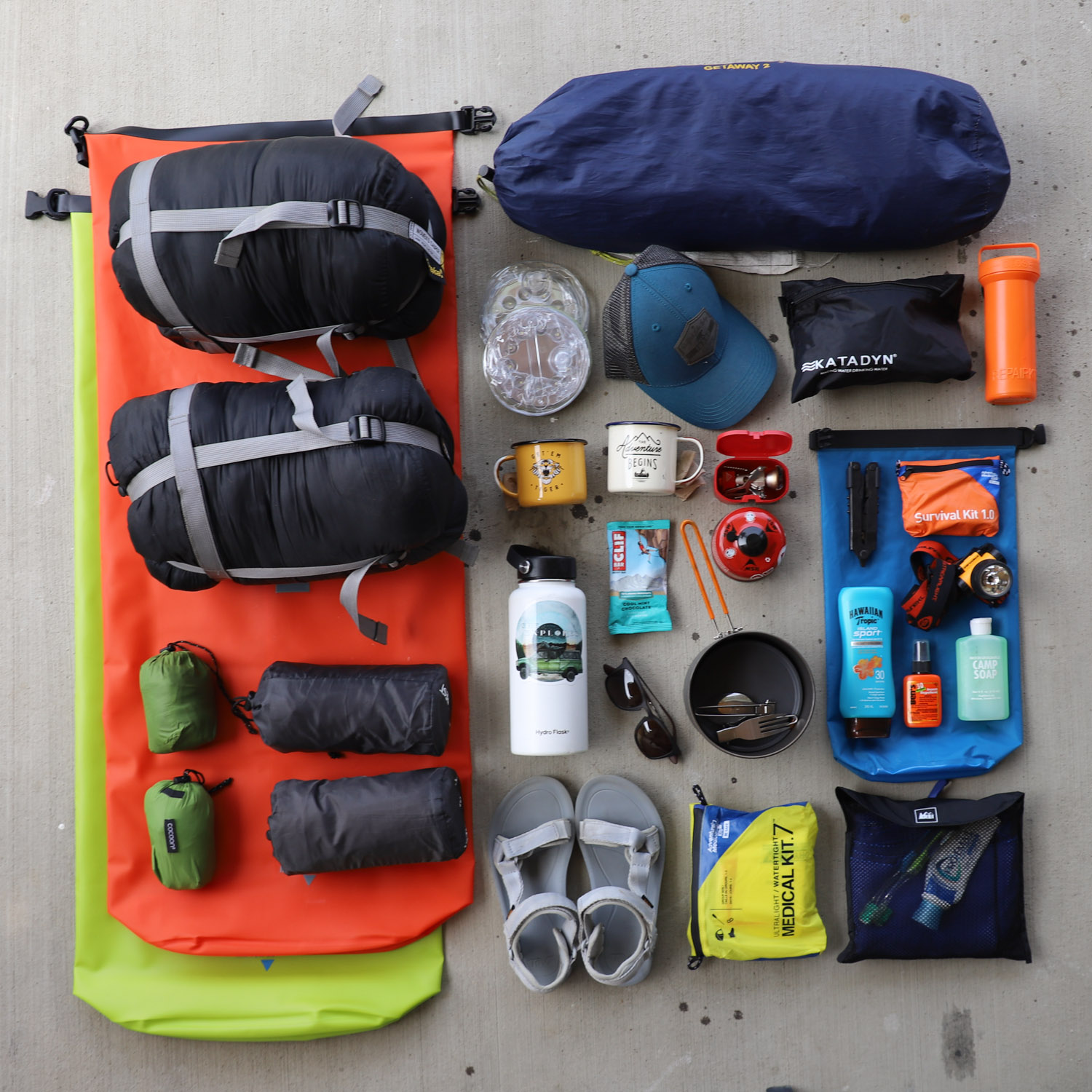
Most of our gear organized after unpacking.
Gear
- Two-person tent
- Sleep: 2 sleeping bags, sleeping pads, and camp pillows
- Solar camp lights and a headlamp
- Cook: ultra-lite stove, basic camp dishes (pot, two nesting bowls, mugs, cutlery) and biodegradable soap
- Dinner, breakfast, and snacks
- Water filter
- Water bottles
- Tools: multi-tool, board patch kit, survival kit, first aid kit
- Pack towels
- Toiletries
- Bug repellant
- Warm socks and a change of clothes for camp
- Map or GPS for navigation
Note: The only gear we had to purchase for this trip were the dry bags. The rest of the packing list are camping supplies we’ve accumulated slowly over years of backpacking and motorcycle trips. Getting outfitted can be EXPENSIVE so use what you have and borrow what you can. Ultra-lite gear is nice, but it’s not the only option.
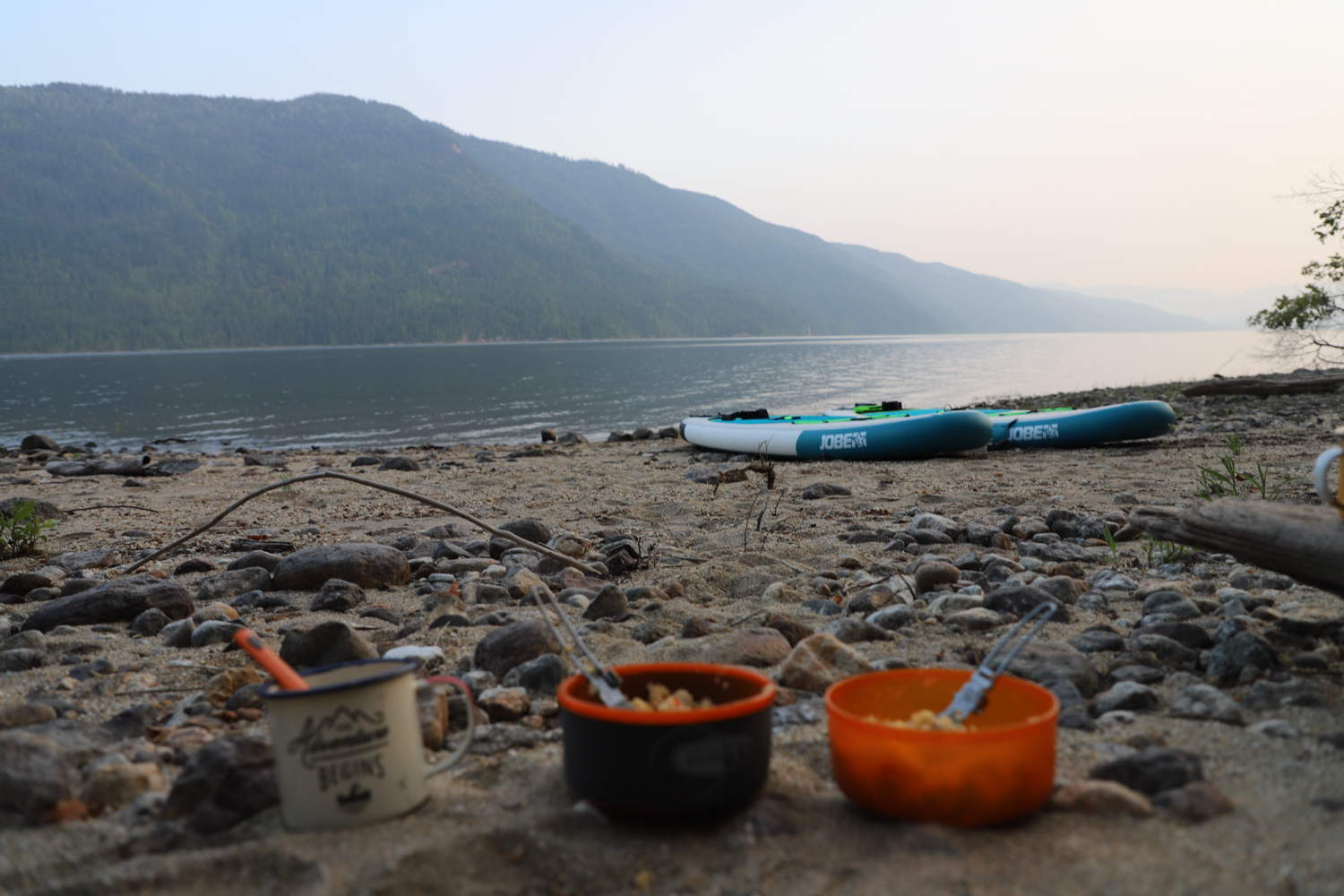
Breakfast on the beach before we broke camp and paddled away
Wear:
- Swimsuit – or if you’re in cold water, a wetsuit is a better bet
- Quick dry clothes
- Long sleeves for sun protection
- Hat and sunscreen
- Water-appropriate shoes
- Personal flotation device (PFD)
Paddling
We got a late start in the day and weren’t on the water until after 7pm! It actually went well though because we got a quiet evening and almost glassy calm water. We launched from a sandy beach near the boat launch and stuck pretty close to shore. Sunset from the water was lovely. Imagine the soft sound of your paddle swirling past as your board slides over reflected blush clouds on the dark silk surface of lakewater.
Safety tips
- Always wear your PFD.
- Use an ankle leash to secure yourself to your board.
- Wear plenty of sunscreen if you’re paddling for hours in the sun.
- Bring enough food and water to sustain yourself through the activity and overnight.
- Pack a small bag with emergency essentials that’s extra secure in case of a board flip. If by some chance you lose EVERYTHING else, what would you need? I packed: a headlamp, camp towel, snacks, a multi-tool, survival kit, my DSLR camera (not essential to survival, just valuable).
Takeaways
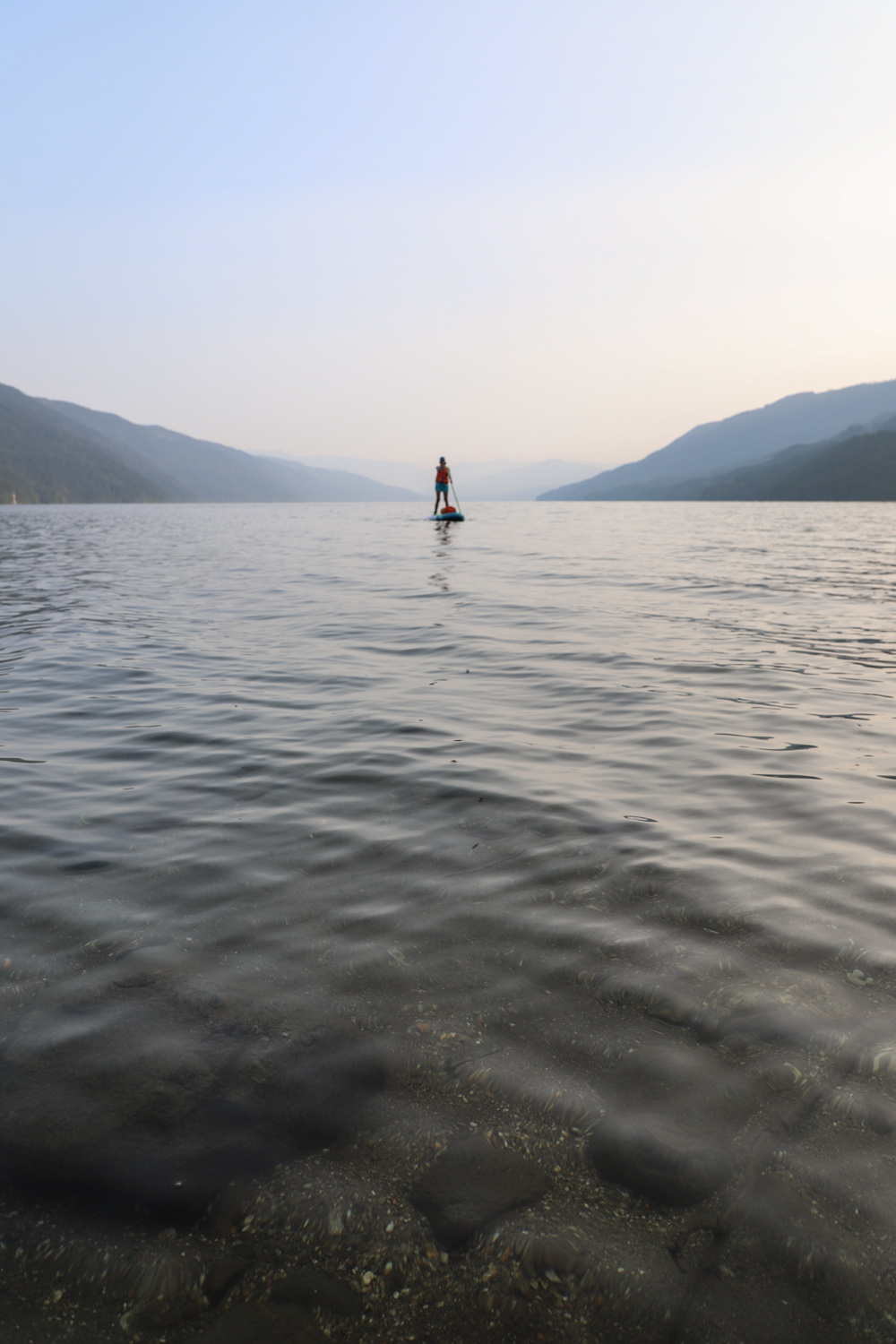
Wildfire haze in the distance and the lake’s rocky bottom below the surface
My first experience SUP camping was a success. I was surprised by how smoothly the trip went, especially with a late put-in and little prior paddling experience. It’s reassuring to know that with a little preparation it’s possible to jump on the water and just go. Even though I’d never SUP camped before, I felt capable and confident once we got moving.
Standing on the water, able to peer into the depths of weeds and flitting trout, you gain a different perspective of the water and landscape: conscious of both above and below.
Like other water travel, SUP takes you places that are impossible to access on foot, but unlike other forms — you stay upright and constantly poised. Paddle boarding feels different, and somehow simpler, than traveling by boat or kayak. The motions of it are a test of balance and awareness. Standing on the water, able to peer into the depths of weeds and flitting trout, you gain a different perspective of the water and landscape: conscious of both above and below.
I’d love to try a multi-day trip eventually. This one-nighter has me dreaming of gliding further down the edge of a lake to find what’s waiting beyond the next forested cove.
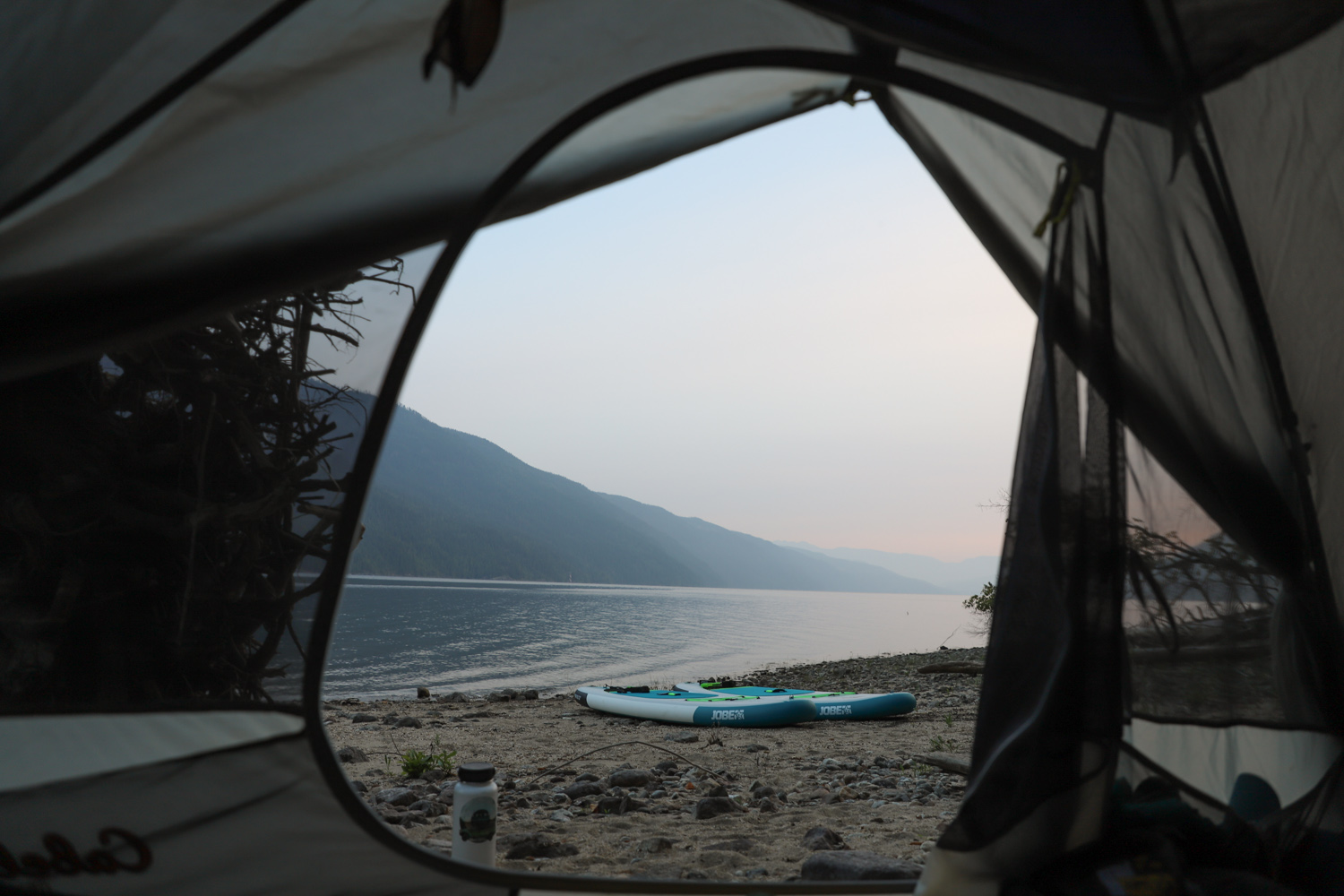
It’s hard to beat waking up to a morning like this.
Note: This article is not sponsored in any way, but it does include affiliate links. If you purchase an item, She-Explores gets a small commission (4 – 8%), which doesn’t change the price of the product for you, but helps keep She-Explores going.
Any SUP tips or camping stories to share? Comment below!
Hailey Hirst is the Digital Content Editor for She Explores and a multi-passionate creative who thrives on the often-overlooked details. She lives in Kelowna, British Columbia. Find her on Instagram.







About to undertake a 65 mile paddle down the River Wye (UK) over the course of 5 days, taking all kit with us & camping in a different location each night. To say I am excited is an understatement, but with a small amount of trepidation added to the mix. It is our first SUP camping expedition & am pretty sure it’s going to be awesome! This was a helpful read in preparation.
Great stuff, thanks for sharing. Will definitely plan a SUP camping this summer! Just need to buy the dry bag. Do you know if the dry bag (with your gear inside) would sink if the board flips and your stuff goes in the water?
It’s best to assume it WILL sink and ensure that it’s fully strapped to your board.
Whether or not it sinks might depend on how much air you trap inside the bag with your gear and how heavy your items inside are, but like Heather said, better to have it secured just in case!
You absolutely have to check out Marble Canyon in Arizona. It’s the Colorado river right below Lake Powell. The 9 campgrounds are immaculate and even have recyclable pit toilets which was nice. Nothing in the world can match this paddle board camping destination.